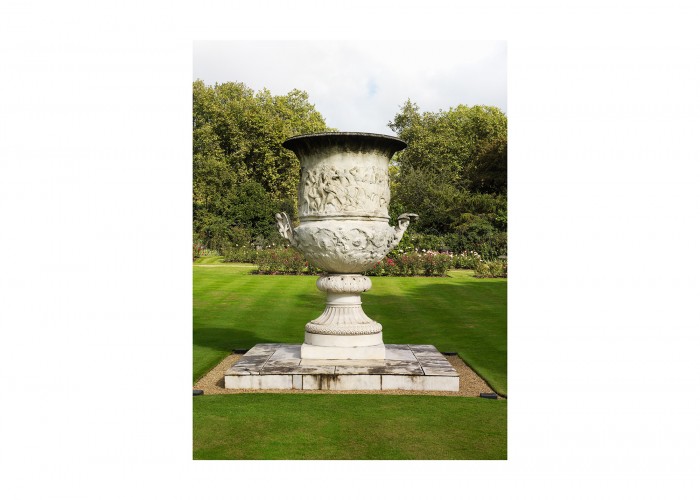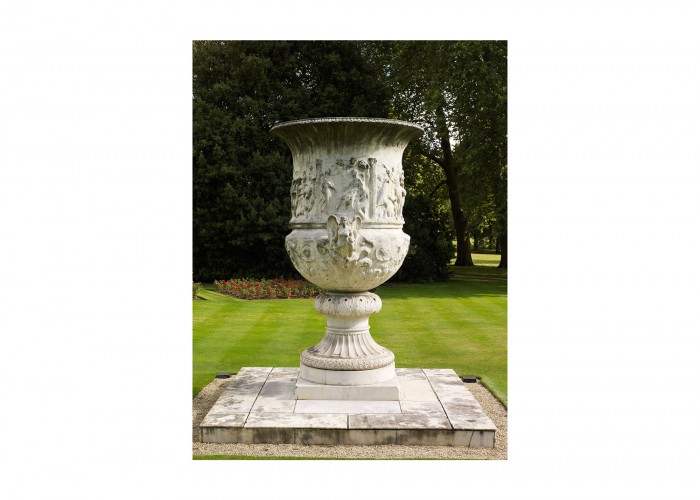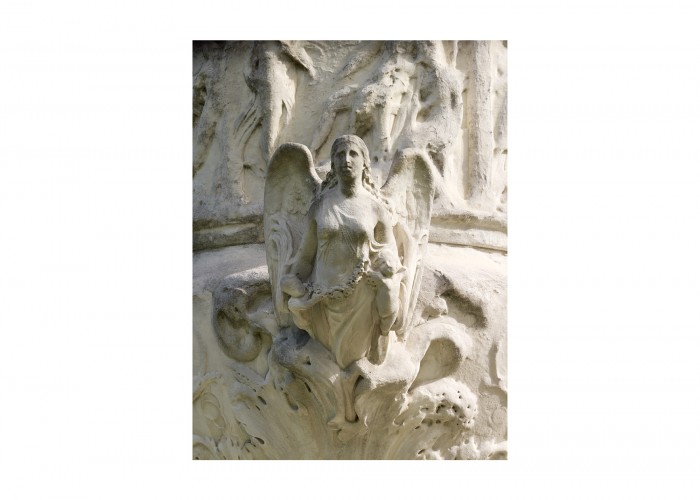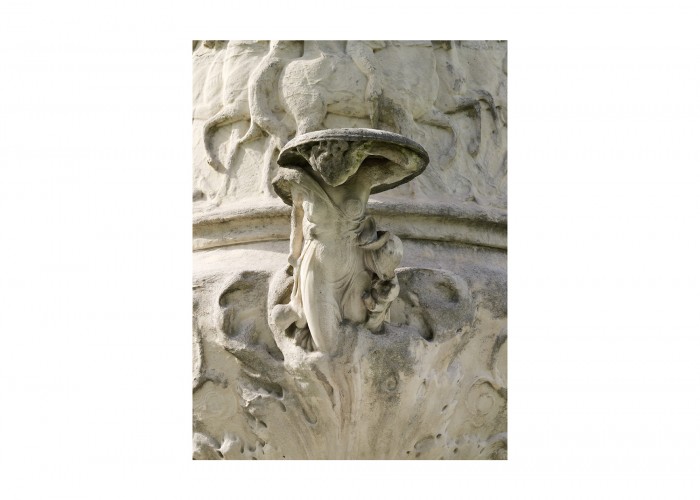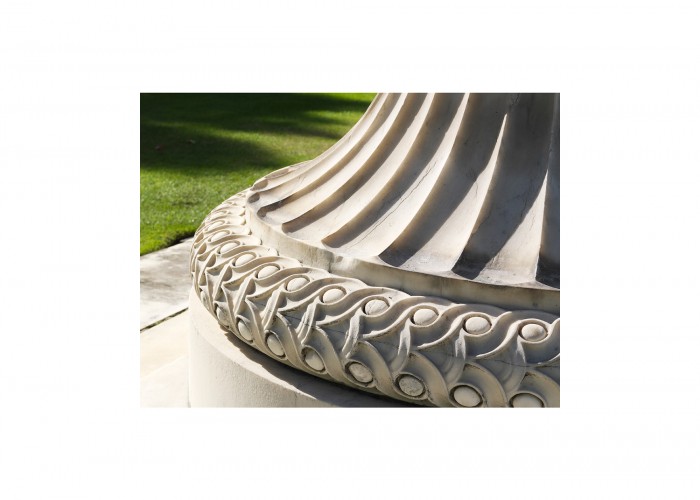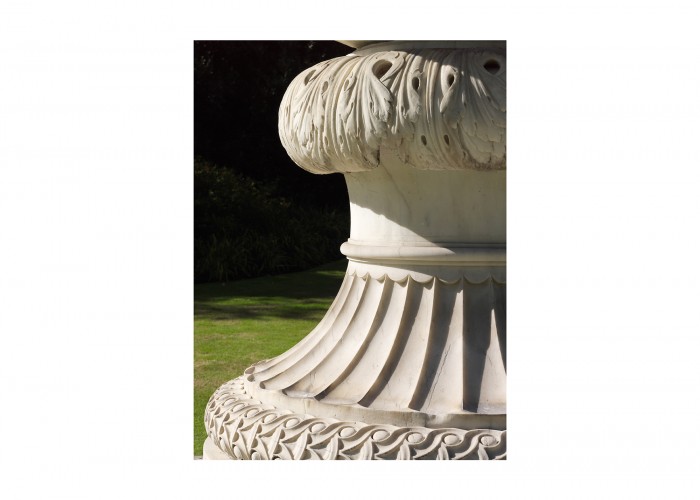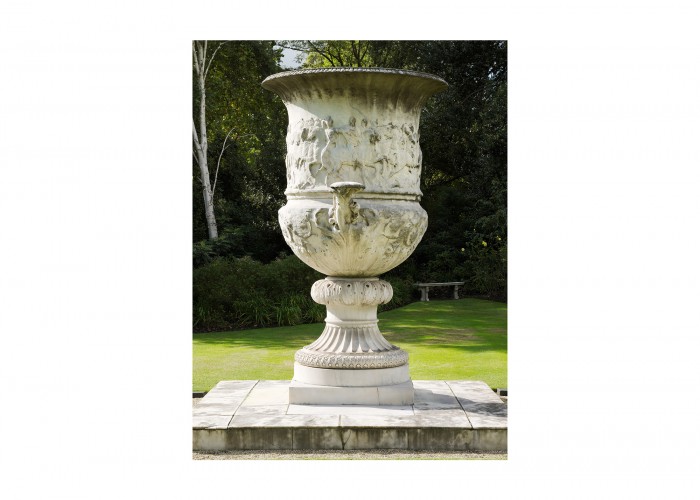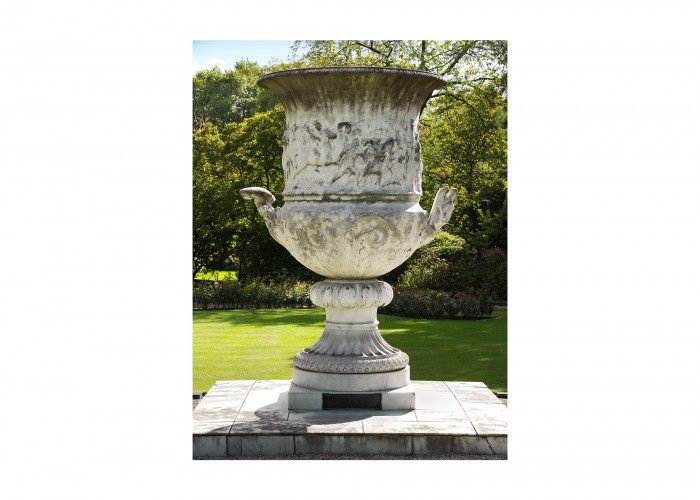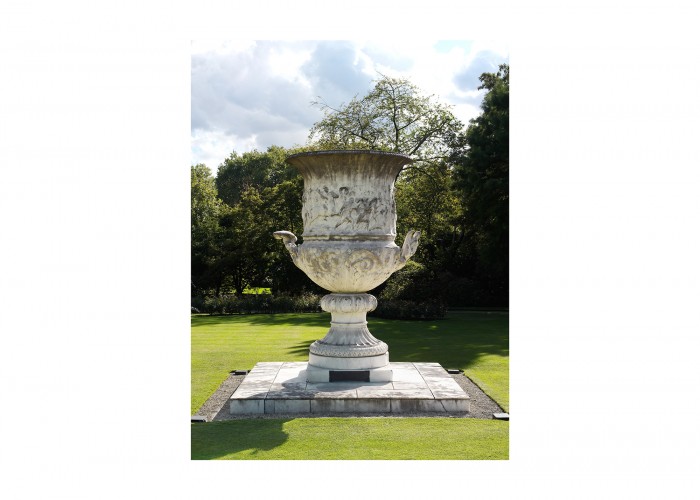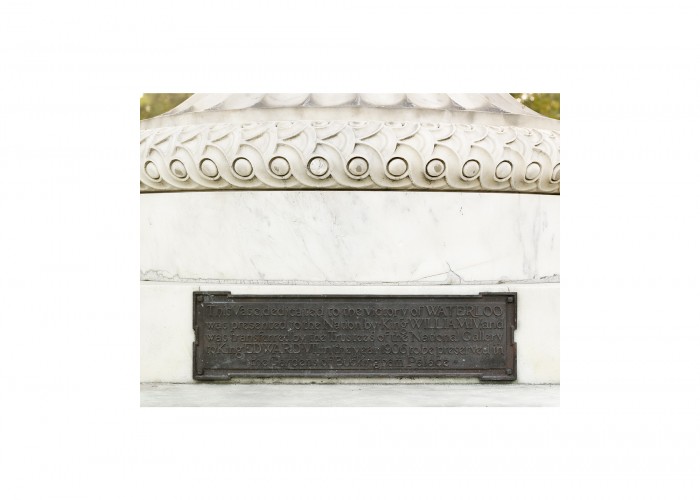The Waterloo Vase
The Waterloo Vase is a huge marble urn standing in Buckingham Palace Gardens. It stands 18ft (5.48m) tall and weighs 40 tons (36.2 metric tonnes). The Vase was made for the Emperor Napoleon, but it now celebrates the defeat of France at the Battle of Waterloo.
The white Carrara marble from which it is made caught Napoleon’s eye when he was passing through Tuscany on his way to invade Russia in 1812. He ordered it to be hewn into a vase with plain, uncarved panels. These would be filled with scenes of his future victories. Instead, after the French retreat from Russia and defeat at Waterloo on 18 June 1815, it was the triumphs of the Duke of Wellington that ultimately adorned the Waterloo Vase.
When the grateful Duke of Tuscany presented the vase to the Prince Regent, a fashionable sculptor called Richard Westmacott was given the task of completing it. The handles are figures representing Victory and Defeat. Decorative emblems include the rose, shamrock and thistle, representing the English, Irish and Scottish regiments who fought at Waterloo. Wellington is depicted on horseback directing the army, while Napoleon is on foot.
The urn proved too heavy for the Waterloo Chamber in Windsor Castle for which it was intended, and was presented to the National Gallery. In 1906 it was restored to the monarchy and placed in the gardens of Buckingham Palace, where it no longer dwarfs its surroundings.
The Vase was well received by critics and the public, unlike the monument of the classical hero Achilles in Hyde Park. This was also created by Westmacott as a tribute to the Duke of Wellington. The nude figure caused outrage and the offending part had to be adorned with a fig leaf.
-
Curatorial info
- Originating Museum: Royal Collection Trust
- Accession Number: 68600
- Production Date: 1819-30
- Creator: Sir Richard Westmacott (1775-1856)
- Material: Marble
- Size: 550 cm x 267 cm diameter
-
Use this image
You can download and use the high resolution image for use in a non-profit environment such as a school or college, but please take note of the license type and rights holder information below
- Rights Holder: Copyright The Royal Collection Trust / Her Majesty Queen Elizabeth II. Photography Relic Imaging Ltd.
- License Type: Creative Commons
Find it here
This object is in the collection of The Queen’s Gallery, Buckingham Palace – The Royal Collection



